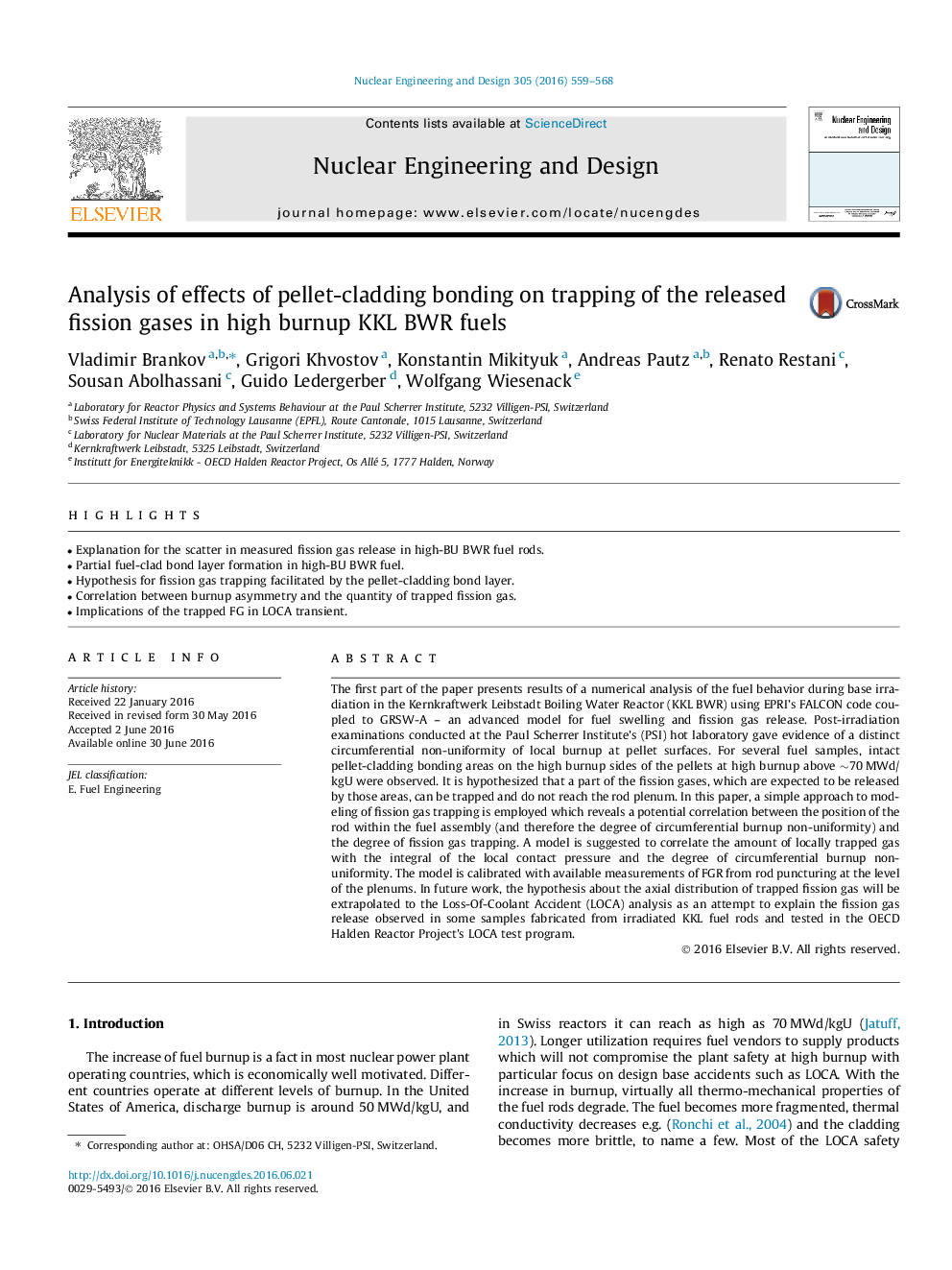| کد مقاله | کد نشریه | سال انتشار | مقاله انگلیسی | نسخه تمام متن |
|---|---|---|---|---|
| 6759992 | 511697 | 2016 | 10 صفحه PDF | دانلود رایگان |
عنوان انگلیسی مقاله ISI
Analysis of effects of pellet-cladding bonding on trapping of the released fission gases in high burnup KKL BWR fuels
دانلود مقاله + سفارش ترجمه
دانلود مقاله ISI انگلیسی
رایگان برای ایرانیان
موضوعات مرتبط
مهندسی و علوم پایه
مهندسی انرژی
مهندسی انرژی و فناوری های برق
پیش نمایش صفحه اول مقاله

چکیده انگلیسی
The first part of the paper presents results of a numerical analysis of the fuel behavior during base irradiation in the Kernkraftwerk Leibstadt Boiling Water Reactor (KKL BWR) using EPRI's FALCON code coupled to GRSW-A - an advanced model for fuel swelling and fission gas release. Post-irradiation examinations conducted at the Paul Scherrer Institute's (PSI) hot laboratory gave evidence of a distinct circumferential non-uniformity of local burnup at pellet surfaces. For several fuel samples, intact pellet-cladding bonding areas on the high burnup sides of the pellets at high burnup above â¼70Â MWd/kgU were observed. It is hypothesized that a part of the fission gases, which are expected to be released by those areas, can be trapped and do not reach the rod plenum. In this paper, a simple approach to modeling of fission gas trapping is employed which reveals a potential correlation between the position of the rod within the fuel assembly (and therefore the degree of circumferential burnup non-uniformity) and the degree of fission gas trapping. A model is suggested to correlate the amount of locally trapped gas with the integral of the local contact pressure and the degree of circumferential burnup non-uniformity. The model is calibrated with available measurements of FGR from rod puncturing at the level of the plenums. In future work, the hypothesis about the axial distribution of trapped fission gas will be extrapolated to the Loss-Of-Coolant Accident (LOCA) analysis as an attempt to explain the fission gas release observed in some samples fabricated from irradiated KKL fuel rods and tested in the OECD Halden Reactor Project's LOCA test program.
ناشر
Database: Elsevier - ScienceDirect (ساینس دایرکت)
Journal: Nuclear Engineering and Design - Volume 305, 15 August 2016, Pages 559-568
Journal: Nuclear Engineering and Design - Volume 305, 15 August 2016, Pages 559-568
نویسندگان
Vladimir Brankov, Grigori Khvostov, Konstantin Mikityuk, Andreas Pautz, Renato Restani, Sousan Abolhassani, Guido Ledergerber, Wolfgang Wiesenack,